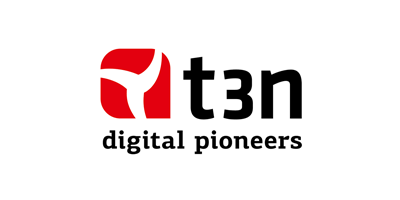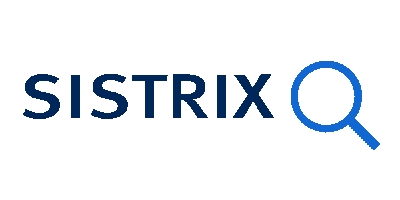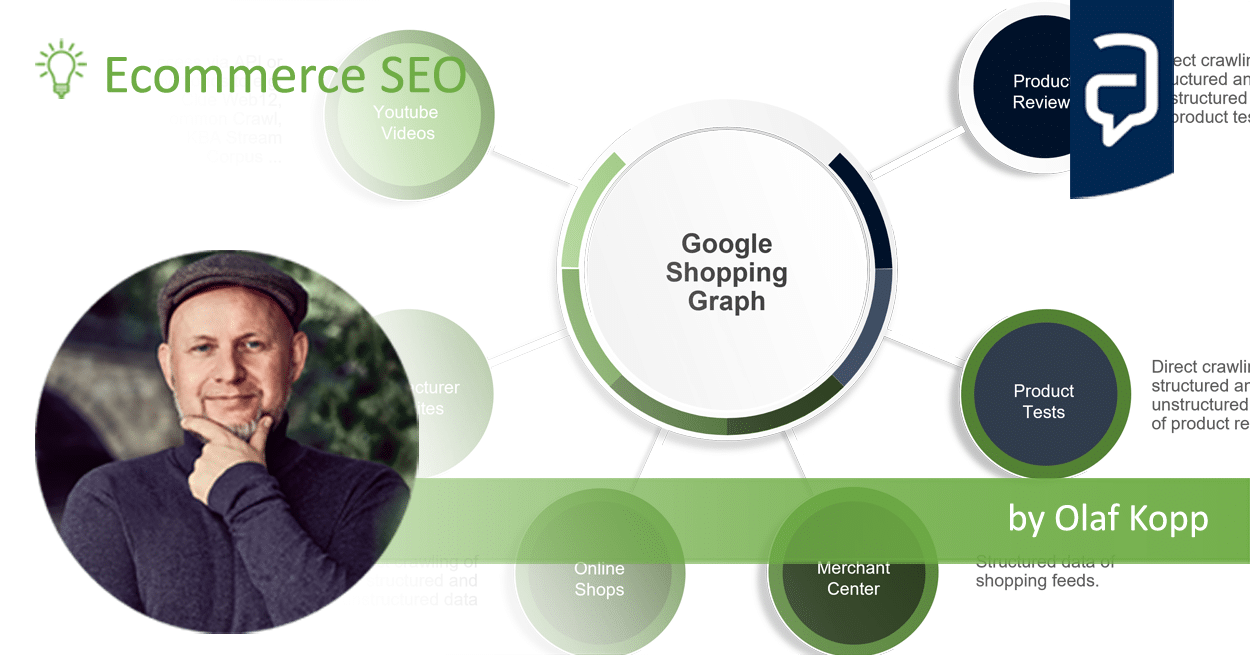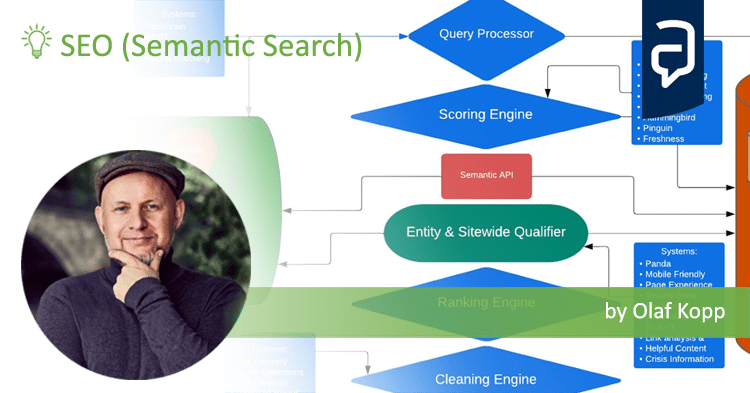Interesting Google patents for search and SEO in 2024
In this article I would like to contribute to archiving well-founded knowledge from Google patents of 2024.
Disclaimer: Are the systems and methods in the patents used by Google?
A patent application does not mean that the methods described there will find its way into practice in Google search. An indication of whether a methodology/technology is so interesting for Google that it could find its way into practice can be obtained by checking whether the patent is pending only in the US or other countries. The claim for a patent priority for other countries must be made 12 months after the first filing.
Regardless of whether a patent finds its way into practice, it makes sense to deal with Google patents, as you get an indication of the topics and challenges that product developers at Google are dealing with.
Below are summaries of the most interesting Google patents from 2024.
More about Google patents in my arcticles:
- The most interesting Google patents and scientific papers on E-E-A-T
- Most interesting Google Patents for semantic search
- Patents and research papers for deep learning & ranking by Marc Najork
- Most interesting Google Patents for SEO in 2023
Contents
Parsing natural language queries without retraining
- Published for: United States
- Last Publication Date: February 27, 2024
- Status: Active
- Expiration date: 2036-09-14
- Inventors: Gray Ice Higdon
The patent related to the parsing of natural language queries, enhancing the parsing quality without retraining. This technology is significant for improving the interaction between users and knowledge databases by parsing natural language queries into structured operations that can be executed on APIs of a knowledge database.

Background
The background of the patent discusses the challenge of bridging the gap between the output quality provided by conventional natural language parsers and the high-quality input required by applications that have a low tolerance for misinterpretations. It acknowledges that the quality of parsing can typically be enhanced by either retraining parsers with improved methods or by supplying high-quality training data. However, both approaches are resource-intensive and time-consuming. This sets the stage for the need for innovative solutions that can improve parsing quality without the extensive resource investment typically associated with retraining parsers and collecting high-quality training data.
Summary
The detailed description of the patent elaborates on a system designed to process natural language queries more effectively, addressing the challenges outlined in the background. Here’s a summary of the key components and functionalities as described in the patent:
- System for Processing Natural Language Queries: It utilizes natural language processing (NLP) techniques to generate structured queries, like SQL queries, from natural language queries. These structured queries can then be executed on an underlying data source to obtain results.

- Parser Training and Improvement: To maintain or enhance analysis quality, parsers are typically trained and retrained with new training data. This document suggests a method to improve parsing quality without the need for such continuous retraining, especially for queries related to specific knowledge domains.
- User Interaction for Disambiguation: The system can interact with the user before or during the parsing process to clarify ambiguities. This interaction may involve specifying domain-specific terms or placing constraints on phrases or symbols in a query deemed ambiguous by the parser.
- Domain-Specific Lexicons: Incorporating domain-specific lexicons into the parsing process allows for a more accurate understanding of queries. These lexicons can be updated with new terms over time, based on user inputs, thus improving parsing accuracy without retraining.
- Implementation and Benefits: The patent details the implementation of the system across various components, including a front-end for natural language interaction, a knowledge database, and domain-specific lexicons. The benefits of this system include reduced effort in improving parsing quality and enhanced analysis quality for natural language queries related to specific knowledge domains without the need for retraining.
- Example Processes and User Interactions: Several example processes illustrate how the system can improve parsing quality through user interactions. These include modifying the query based on user feedback to resolve ambiguities and using domain-specific terms to guide the parsing process.
The description emphasizes a significant shift towards utilizing user feedback and domain-specific knowledge to enhance the parsing of natural language queries, aiming to reduce the reliance on continuous parser training while improving query understanding and accuracy.

On the one hand, the patent shows that Google continues to rely on semantic entity databases such as the Knowledge Graph and is attempting to use these directly for the output of search results. I also see the methodology described in the patent as a scalable approach to providing LLMs with additional topic-specific data in the RAG process.
Implications for SEO
1. Enhanced Understanding of User Queries
- Implication: The technology’s ability to better parse and understand natural language queries, especially those with ambiguities, means search engines could more accurately match content to user intent.
- SEO Impact: Content creators might need to focus more on natural language content that aligns closely with user intent and questions, rather than solely on keywords.
2. Domain-Specific Lexicons
- Implication: The use of domain-specific lexicons to disambiguate and accurately parse queries suggests that search engines could become more adept at understanding industry-specific language.
- SEO Impact: SEO strategies may need to incorporate more domain-specific terms and jargon. Websites and content within niche markets could benefit from optimizing for technical or specialized vocabulary relevant to their domain.
3. User Interaction for Disambiguation
- Implication: The system’s reliance on user interaction to resolve ambiguities in queries suggests a move towards more interactive search experiences.
- SEO Impact: This could lead to an increased importance of user engagement metrics. Websites that effectively engage users and meet their search intent could be favored in search results.
4. Dynamic Lexicon Updates
- Implication: The ability to update lexicons with new terms over time, based on user inputs, implies that the system’s understanding of language and queries will evolve.
- SEO Impact: Continuous content updates and the inclusion of emerging terminology and trends in content could become critical for maintaining visibility in search results.
5. Reduced Need for Parser Retraining
- Implication: Improving parsing quality without continuous retraining means that search engines could quickly adapt to new query patterns or language use without significant downtime or resource investment.
- SEO Impact: SEO strategies may need to be more agile and responsive to changes in language use and query patterns, as search engines could adapt more quickly to these changes.
Media consumption history
- Published for: United States, China, WIPO
- Last Publication Date: February 2, 2024
- Status: Pending
- Inventors: Matthew Sharifi
The patent introduces a sophisticated system designed to enhance user experiences by personalizing content recommendations and search responses based on users’ historical content consumption. This system leverages a detailed analysis of media consumption histories, utilizing various components to process user queries and deliver highly relevant information.

System Components and Workflow
- Content Consumption Engine: Stores detailed records of content consumed by users, including associated entities and contextual details, in a media consumption history database.
- Classifier Engine: Analyzes consumed content to classify content types (e.g., movies, songs) and gathers additional relevant information, such as associated entities and production details.
- Query Engine: Acts as the interface for user queries, capable of processing textual and voice inputs, and collaborates with the query analysis engine to tailor responses based on the user’s content consumption history.
- Query Analysis Engine: Identifies relevant content items and entities based on user queries by analyzing query terms and accessing the media consumption history database. It assigns relevance scores to these items and entities to personalize the query responses.

Ranking and Scoring
Content items and entities are ranked based on confidence and relevance scores, allowing the system to prioritize information in the query response.
Relevance Scores
- Definition: Relevance scores measure how much a user is likely interested in a specific content item or entity. These scores reflect the user’s perceived preference for various content items or entities, based on their consumption history.
- Determination: Factors influencing relevance scores include the method of content identification (e.g., social network endorsements vs. cable TV history) and the frequency or context of content consumption (e.g., re-watching content, location of consumption).
Confidence Scores and Ranks
- Confidence Scores: These scores indicate the likelihood that the content has been correctly identified as consumed by the user. Different identification methods can result in varying confidence levels.
- Ranking: Content items and entities are ranked based on their confidence and relevance scores. This ranking helps in prioritizing content that is more relevant or of interest to the user.
Innovative Aspects:
- The system offers personalized responses to search queries, including knowledge cards with relevant information, based on the user’s media consumption history.
- It considers which media content the user has consumed and links this to the search query.

Additional Features:
- Responses to a search query may include data indicating that an entity is recorded in the user’s media consumption database as consumed content.
- The system can also specify the time and location of consumption, incorporating these details into the response.
- It can position knowledge cards based on consumption behavior and determine the number of knowledge elements to include.
Knowledge Cards:
- A knowledge card is a user interface element displaying information or known facts about a specific entity mentioned in the search query.
- The system determines the content of the knowledge card by identifying content consumed by the user that is associated with the queried entity.
For instance, a query for “The Rolling Stones” prompts the system to identify content related to the band that the user has previously consumed (e.g., albums or songs) and uses this information to populate the knowledge card with relevant content.

Implications for SEO
1. Enhanced User Personalization
The system’s ability to tailor search results and content recommendations to individual users’ past consumption behaviors underscores the growing importance of personalization in SEO. Search engines that leverage such technologies can offer more relevant results, improving user satisfaction and engagement. For SEO, this means optimizing content not just for keywords but also for user intent and preferences.
2. Increased Importance of User Engagement Metrics
With the system prioritizing content based on historical consumption, metrics like click-through rates (CTR), time on page, and bounce rates become even more critical. These metrics can influence how content is recommended to users, highlighting the need for SEO strategies that focus on engaging users and encouraging them to interact more deeply with content.
3. Content Diversity and Relevance
The system’s emphasis on matching content to users’ interests and past interactions suggests a need for a diverse content strategy that covers a wide range of topics, formats, and perspectives. SEO strategies should focus on creating comprehensive content that addresses various aspects of a topic, ensuring that there’s something relevant for different user preferences.
4. Semantic Search Optimization
Given the system’s use of entities and relevance scoring, there’s a clear move towards semantic search optimization. SEO strategies should incorporate structured data markup to help search engines understand the context and relationships between entities within content. This includes optimizing for topics and entities that are closely related to the user’s interests and past consumption patterns.
5. Dynamic Content Optimization
The patent highlights the dynamic nature of content relevance, based on changing user preferences and consumption histories. SEO strategies must adapt by continuously updating and optimizing content to remain relevant to the target audience’s evolving interests. This could involve updating older content, adding new insights, or repurposing content across different formats.
6. Cross-Platform Content Strategy
With content consumption data potentially coming from various sources (e.g., TV, online platforms, social media), SEO strategies should consider a cross-platform approach. Optimizing content for visibility and engagement across different platforms can increase the chances of it being recommended to users, regardless of where they consume content.
Using user input to adapt search results provided for presentation to the user
- Published for: United States, Europe, Canada, China, WIPO
- Last Publication Date: January 16, 2024
- Expected Expiration Date: October 4, 2037
- Inventors: David Kogan and Bryan Horling
The background of the patent US11875086B2 addresses the interaction between users and automated assistants, which are also known as personal assistant modules, mobile assistants, or chatbots. These assistants can be accessed through various computing devices such as smartphones, tablets, wearable devices, automobile systems, standalone personal assistant devices, and more. They are designed to receive textual input from users—either typed or spoken—and respond with appropriate output, which can be visual and/or audible.

The document highlights that some interactions with automated assistants might only require a single response. For example, asking for the time in London, the capital of Delaware, or the conversion of ounces to cups would elicit straightforward answers from the assistant. However, other interactions are more complex and general, prompting the assistant to provide a group of responses. Queries like “news headlines,” “nearby restaurants,” or “search results for mustang” would lead the assistant to conduct searches across one or more databases to return a set of relevant results.
The innovations enable users to navigate search results more effectively within the dialogue and according to the constraints of the device or interface being used. Additionally, the system can adjust the timing and selection of search results presented to the user based on their input, improving the relevance and efficiency of the interaction. This approach aims to enhance user experience by making search result presentation more dynamic and responsive to user needs.

Claims
The claims of the patent US11875086B2 detail a comprehensive system for improving user interaction with automated assistants by dynamically adapting the presentation of search results based on user input. Key aspects of these claims include:
- Sequential Presentation of Search Results: The system is designed to receive user input and, based on this input, obtain and sequentially present groups of search results to the user. This sequential presentation is tailored to the user’s ongoing dialogue with the automated assistant, enhancing the relevance and accessibility of information.
- Adaptation Based on User Input: The method includes adapting the presentation order or selection of search results in response to further user input. This could involve prioritizing certain results, revisiting previously presented results, or altering the presentation based on specific attributes mentioned by the user.
- Interactive Navigation: Users can interactively navigate through the search results by providing additional input, such as commands to go back, skip to specific results, or request more information on a particular topic or from a specific source. This allows for a more flexible and user-driven exploration of information.
- Attribute-Based Response Adaptation: The system can adapt responses based on the attributes of previously presented search results and the terms used in the user’s input. This includes identifying specific attributes (e.g., source names, topics) that match the user’s input and adjusting the presentation accordingly.
- Enhanced User Interface Interaction: The claims also cover methods for presenting the adapted search results through various user interface output devices, such as displays or speakers, and receiving user input through different input devices, enhancing the system’s versatility and user-friendliness.
- Optimization of Search Result Presentation: The system optimizes how search results are presented to the user, including the possibility of presenting additional related search results that are based on different underlying content but related to the user’s query.

Implications for SEO
1. Enhanced Focus on User Intent
The patent underscores the importance of understanding and responding to user intent. SEO strategies should prioritize content that aligns with the specific needs and queries of users, as search results can be dynamically adapted based on the context of the user’s query and interaction history.
2. Semantic Search Optimization
Given the patent’s emphasis on adapting search results based on attributes referenced in user input, there’s a clear indication towards the significance of semantic search. Content creators and SEO specialists should focus on semantic SEO practices, ensuring content is contextually relevant to a wide array of user queries related to the topic.
3. Voice Search and Conversational Queries
With the adaptation of search results based on spoken input, optimizing for voice search and conversational queries becomes increasingly important. This involves structuring content in a way that answers questions directly and succinctly, as voice interactions typically seek quick and relevant responses.
4. Personalization and User Experience
The patent highlights the potential for highly personalized search experiences. SEO strategies should consider user behavior, preferences, and interaction history to tailor content. Enhancing the user experience through personalized and relevant content can improve engagement and satisfaction.
5. Interactive Content for Automated Assistants
The interaction with automated assistants suggests a need for content that supports interactive queries and navigation. SEO strategies might include creating content that facilitates easy navigation and interaction through structured data, clear headings, and question-answer formats to align with the dynamic presentation of search results.
6. Technical SEO for New Interfaces
As search results are adapted for presentation across various devices and interfaces, technical SEO must ensure content is optimized for different formats, including mobile devices, voice assistants, and chatbots. This includes fast loading times, mobile-friendly design, and accessibility.
7. Long-Tail Keywords and Detailed Content
The adaptation based on specific attributes and user input highlights the value of long-tail keywords and detailed, comprehensive content. By covering a broader range of specific queries and topics, content can capture more nuanced user intents.
Identification and Issuance of Repeatable Queries
- Published for: United States, Europe, Japan, China, WIPO
- Last Publication Date: January 9, 2024
- Expected Expiration Date: November 6, 2039
- Inventors: Yew Jin Lim, David Adam Faden, Mario Tanev, Lauren Ashley Koepnick, Sagar Gandhi, William Ming Zhang
The patent describes methods, systems, and apparatuses, including computer programs encoded on a computer storage medium, for identifying and issuing search queries expected to be issued in the future. It involves obtaining a set of search queries that have been issued by multiple user devices and determining contextual data for each query instance. A model is used to calculate the likelihood of a query being issued in the future based on the contextual data.
The background of the patent highlights the inefficiencies and user experience challenges associated with the traditional handling of search queries by search engines. It sets the stage for the invention by outlining the need for a more predictive, efficient approach to managing repeat search queries, ultimately aiming to enhance the search experience while reducing computational waste.
Process
- Obtaining a Set of Search Queries: That have been issued by multiple user devices.
- Determining Contextual Data: For each query instance that represents the context in which the query was issued.
- Inputting into a Learning Model: The model calculates the likelihood that a query will be issued in the future.
- Identification of Repeatable Queries: Queries that meet a certain repeatability threshold are stored as repeatable.
- Issuance of Repeatable Queries: Upon selection of a user-selectable interface component, stored repeatable queries are issued, and the search engine provides search results for the query.

Benefits
- Saving Resources: Reduces the computing resources needed to provide search results in response to issued search queries.
- Saving Time: Saves time and resources typically required for manually issuing a search query.
- Improving Usability: Allows users to issue certain repeatable queries without needing to input any part of the query.
Claims
- Identification of Repeatable Queries: The system obtains a set of search queries issued by multiple user devices and determines contextual data for each query instance. It then uses a learning model to predict the likelihood of each query being issued in the future. Queries that meet a certain likelihood threshold are classified as repeatable.
- Storage and Issuance: Repeatable queries, once identified, are stored. A user interface component allows users to select and issue these stored repeatable queries without needing to manually input them. This process is designed to streamline the search experience by preemptively recognizing and facilitating the issuance of queries that are likely to be repeated.
- Contextual Data Utilization: The system uses a variety of contextual data in its process, including the language of the query, geographic location from which the query was issued, the frequency of the query’s issuance, and a semantic embedding of the query that captures its relationship to other queries.
- User Interface Components: The patent describes different types of user-selectable interface components that can trigger the issuance of repeatable queries. These components could include shortcut links, drop-down menus listing repeatable queries, or other interface elements that allow for easy selection and issuance of queries.
- Dynamic Response to User Behavior: The system can dynamically update the set of repeatable queries based on ongoing user behavior and interactions. This includes adjusting which queries are considered repeatable based on new data about their frequency and context of use.
- Efficiency and Resource Saving: By identifying and storing responses to repeatable queries, the system aims to reduce the computational resources required to process these queries. This can lead to faster response times for users and reduced load on the search engine’s infrastructure.
- Enhanced User Experience: The patent claims that this system can improve the user experience by making it easier to reissue frequent queries and by ensuring that the search results for these queries are readily available, potentially even in a predictive manner before the user explicitly requests them.
These claims outline a comprehensive system for enhancing search engine functionality by leveraging predictive modeling to identify and facilitate the reuse of queries that are likely to be repeated by users. The focus is on improving efficiency, reducing resource consumption, and enhancing the overall user experience by making frequent searches more accessible and less burdensome to issue.

Implications for SEO
1. Emphasis on User Intent and Query Predictability
- The patent underscores the importance of understanding user intent and the predictability of search queries. SEO strategies should increasingly focus on identifying patterns in user search behavior and optimizing content to meet these recurring needs. This involves creating content that addresses not just immediate informational needs but also anticipates repeat queries.
2. Content Optimization for Repeat Queries
- Since the system identifies and facilitates the reuse of queries likely to be repeated, optimizing content for these repeat queries becomes crucial. This means analyzing search query data to identify which queries are repeated over time and ensuring that content is optimized to rank well for these queries.
3. Semantic Search and Query Context
- With the patent’s focus on using contextual data (like language, location, and semantic relationships between queries) to identify repeatable queries, there’s a clear implication for SEO to leverage semantic search optimization. This involves optimizing content to ensure it is contextually relevant, uses natural language, and aligns with the semantic relationships that search engines use to understand and categorize content.
4. Predictive SEO
- The concept of predictive SEO, where strategies are not just reactive but also anticipatory, gains more ground with this patent. SEO professionals might need to leverage data analytics more extensively to predict future search trends and prepare content that addresses these trends before they become apparent in search data.
- The dimensions of the Google ranking - 25. April 2024
- Interesting Google patents for search and SEO in 2024 - 3. April 2024
- What is the Google Shopping Graph and how does it work? - 27. February 2024
- “Google doesn’t like AI content!” Myth or truth? - 19. February 2024
- Most interesting Google Patents for semantic search - 12. February 2024
- How does Google search (ranking) may be working today - 4. February 2024
- Success factors for user centricity in companies - 28. January 2024
- Social media has become one of the most important gatekeepers for content - 28. January 2024
- E-E-A-T: Google ressources, patents and scientific papers - 24. January 2024
- Patents and research papers for deep learning & ranking by Marc Najork - 21. January 2024






















